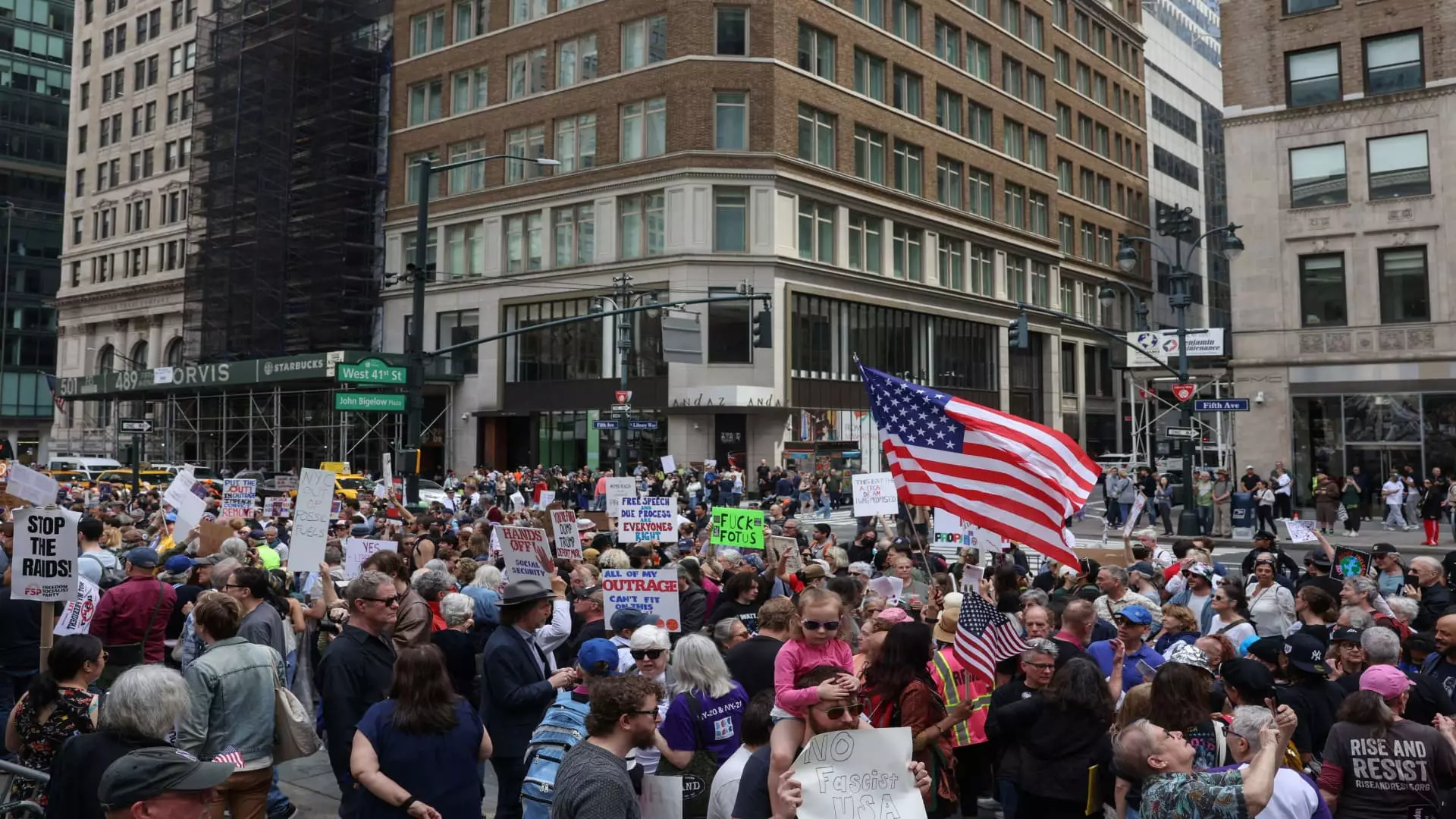In a vivid display of dissent that pulsated through cities and small towns alike, Americans rose up in protest against what many see as the erosion of foundational democratic principles under the leadership of former President Donald Trump. These rallies, reminiscent of the spirited gatherings during the American Revolutionary War, signaled more than mere opposition to policy—they embodied a deep-rooted anxiety about the preservation of liberty and justice in the face of escalating governmental overreach. It is essential to recognize that these demonstrations were not only responses to specific legislative actions but rather a clarion call for the very essence of democracy that seems to be hanging by a thread.
Consider the poignant image of Thomas Bassford, an octogenarian who journeyed three hours from Maine to engage with the past at the reenactment of the Battles of Lexington and Concord. For him, the historical significance of that day—April 19, 1775—was overshadowed by the present, where he perceives an imminent threat to individual rights and freedoms. Such sentiments are echoed across the nation, revealing a landscape where citizens are mobilizing not just as a reactionary force, but as guardians of a legacy that should inspire action, education, and engagement for future generations.
Rising Tide of Civil Discontent
At the forefront of these protests was a palpable sense of urgency regarding civil rights and systemic injustices. Activists voiced their dissent against Trump’s policies, which they deemed violative of constitutional rights. This wave of civil discontent transcended mere political disagreements; it became an indictment of what many view as a drift toward authoritarianism. From the memorably articulated chant, “No Kings, No Tyrants,” to the emphatic placards denouncing the perceived “fascist regime,” the energy in the streets was electric, vehemently opposing any concentration of power that stifles dissent and curtails freedoms.
Participants like George Bryant articulated fears of a “police state” taking root in America, framing Trump’s governance as a direct challenge to the constitutional safeguards that protect citizens’ rights. The invocation of historical parallels resonates deeply, reminding protesters of the importance of vigilance in safeguarding democracy. Bryant’s concerns are not simply rhetorical flourishes—they reflect a profound societal anxiety about the balance of power and the role of governmental authority, a vital discussion in any democratic society.
The Impending Threat to Safety Nets
Among the demonstrators was Bob Fasick, whose zealous participation was driven by urgent concerns over curtailed social safety nets, including Social Security and health programs that many depend on. His words struck a chord: the stable world we leave for future generations hangs in precarious balance. With attempted rollbacks of funding for essential social programs, there is a growing trepidation that the most vulnerable among us will bear the brunt of administrative negligence.
The reality is that when social safety nets are compromised, people do not just lose services; they lose dignity and hope. Fasick’s call to action serves as a sober reminder that fighting for democracy is also about advocating for economic and social justice—interconnected values that must be championed vigorously if we wish to uphold our democratic ideals.
Voices Against Executive Overreach
As the protests unfolded, issues of executive overreach became a focal point of discussion. Melinda Charles from Connecticut’s concerns regarding Trump’s overreaching executive powers reveal a fundamental apprehension about the erosion of checks and balances that safeguard against tyranny. Her apprehension is the echo of many citizens worried about the consolidation of power within the executive branch—a historical concern that roots itself in the very fabric of American governance.
This discontent goes beyond simple political rivalry; it reflects a collective striving for equity and accountability. We must remember that a democracy thrives on an informed and engaged citizenry, ready to challenge any force that undermines its foundational ideals. The fight against this perceived overreach is not merely a fight against a singular administration but a battle to reclaim the democratic space that must belong to the people.
In reflecting on the myriad protests, it becomes clear that these actions are not isolated instances of dissent but rather a cohesive movement towards reaffirming democratic values. The stakes are high, and the level of civic engagement witnessed across the nation is vital to the continuing struggle for an equitable society. Each rally, each voice raised in protest, serves as a vital reminder of the responsibility accompanying citizenship and the ongoing fight for liberty and justice in America.


Leave a Reply